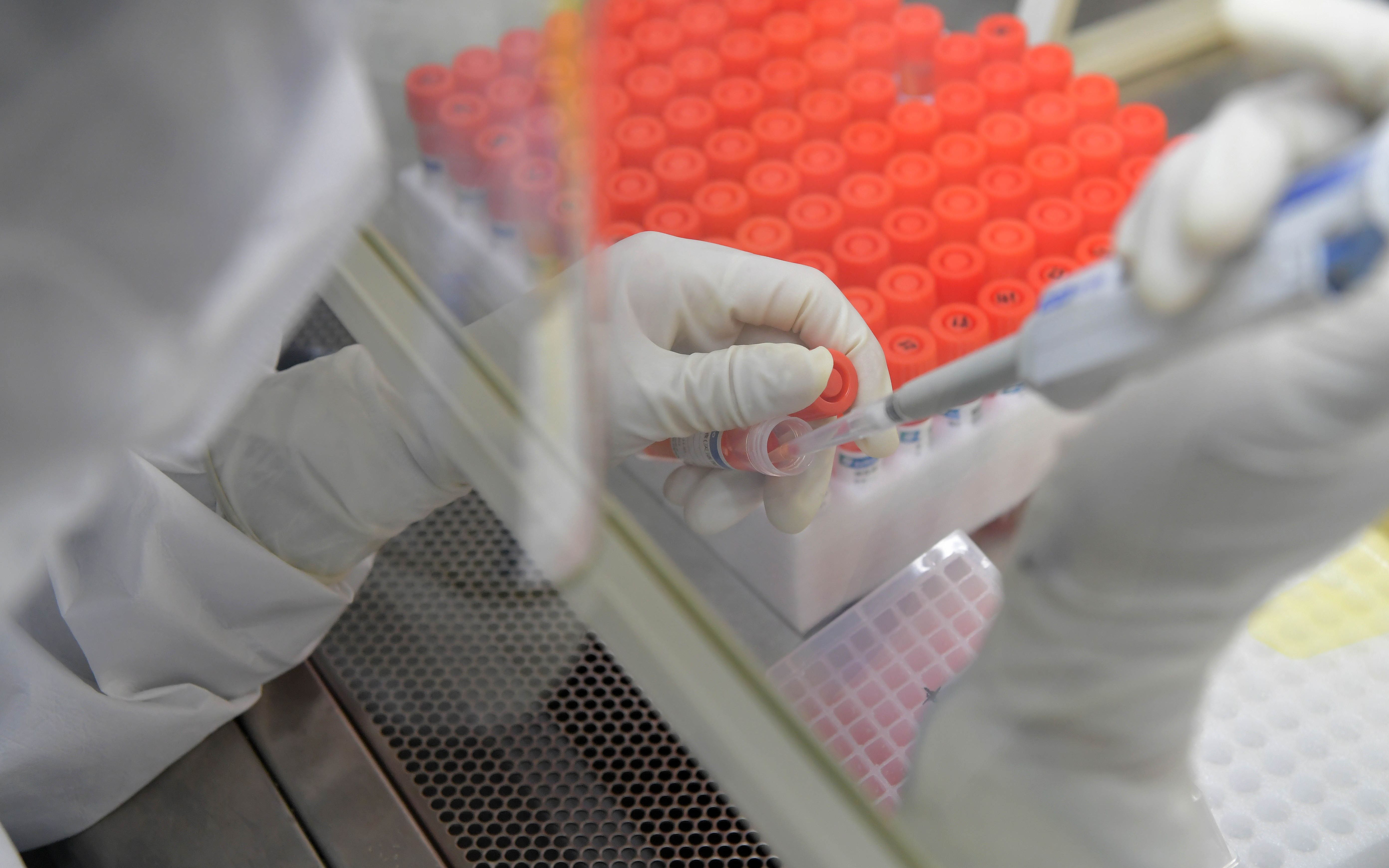
▲In a nucleic acid testing laboratory, nucleic acid testers are sending samples for testing. Figure / Xinhua News Agency
According to the first financial report, starting from 2020, the new crown epidemic has emerged one after another in China, the number and frequency of nucleic acid tests have continued to grow, and the market size has grown more than 10 billion yuan. Recently, there have been cases where nucleic acid test results were accused of being inaccurate in some places, and the supervision of third-party nucleic acid testing institutions has once again caused heated discussions in the society.
At present, nucleic acid testing has become an important means of normalizing epidemic prevention and control, and nucleic acid negative certificates have become a necessary “pass” for people to go out. The huge amount of nucleic acid testing requires not only a sufficient number of laboratory testing personnel, but also a large number of on-site sampling personnel. It is difficult to complete this task by relying on medical institutions that also undertake daily diagnosis and treatment tasks. In this context, there is no problem in outsourcing part of nucleic acid testing tasks to third-party testing agencies.
The establishment of a third-party testing agency and the outsourcing of inspections by hospitals is also a reform advocated in recent years. This can not only avoid the repeated construction of the hospital, reduce the operating cost of the hospital, but also reduce the burden of seeing a doctor. From this perspective, the epidemic has a strong impetus for the expansion of third-party testing institutions.
Because of this, after the outbreak, a large number of third-party testing institutions entered the market. According to the data of Tianyancha Professional Edition, there will be 437 new medical inspection-related institutions in 2021, with an annual growth rate of 25.1%, the highest in history. As of May 11, 2022, my country has established 220 medical inspection-related institutions.
The “running entry” of third-party testing agencies is very beneficial to relieve the pressure of nucleic acid testing, but there are also problems such as incomplete qualifications, lack of ability, lack of internal management of the agency, and even lead to serious distortion of nucleic acid testing results. The consequences, which could trigger a crisis of public confidence, must be taken seriously.
You must know that the inspection quality of the hospital’s internal institutions is directly related to the quality of medical care, and also affects the reputation of the hospital, and the hospital itself will be strictly managed. In addition, in a hospital, the links of inspection, diagnosis, and treatment become a whole. Any loophole in the link will endanger the entire diagnosis and treatment process. Other links have strong binding force on the inspection link. For example, a doctor suspects a certain test during the diagnosis and treatment process. When the result is distorted, it is checked immediately with the laboratory.
But third-party testing institutions do not have the constraints and regulatory advantages of a laboratory in a hospital. Not only that, third-party testing agencies also have shortcomings such as strong capital-driven profit-seeking, and large institutional and personnel turnover. At present, the huge pressure faced by nucleic acid testing has also magnified the regulatory shortcomings of third-party testing institutions. Therefore, it is particularly important for the regulatory authorities to explore and improve relevant systems while taking multiple measures.
First of all, a restraint mechanism should be established from the technical level, and the relevant management methods of the hospital can be used for reference. For example, the index included in the inspection and inspection quality evaluation of the hospital can also be used for the evaluation of third-party testing institutions; the inspection and testing outsourced by the hospital , and should also be included in the whole medical process to confirm or falsify, so as to form mutual constraints between institutions.
Secondly, we should reflect on the management level, explore and improve the supervision system of third-party nucleic acid testing institutions based on a long-term perspective, and strengthen the strict management of the entire chain of the nucleic acid testing industry. The results of nucleic acid testing are of great importance. In the face of a large number of testing institutions entering the venue in a short period of time, the regulatory authorities must ensure that the entry barriers such as the qualifications of institutions and personnel must be established. Something will happen.
In addition, the internal management system of third-party nucleic acid testing institutions needs to be improved urgently. During this period, it is advisable to use external supervision to force it to improve its internal supervision mechanism. For example, the regulatory authorities can enhance the deterrent effect of supervision through regular quality spot checks and quality assessments. It is believed that with multi-level efforts and full competition, non-compliant third-party nucleic acid testing institutions will inevitably be eliminated.
In the future, as public hospitals gradually return to the normal development of their own diagnosis and treatment business, third-party testing institutions will be an important main force in the nucleic acid testing business. The sooner supervision is improved, the more risks can be reduced and the smooth progress of the anti-epidemic work.
Writing / Luo Zhihua (Doctor)
Editing / Xu Qiuying
Proofreading /Liu Jun